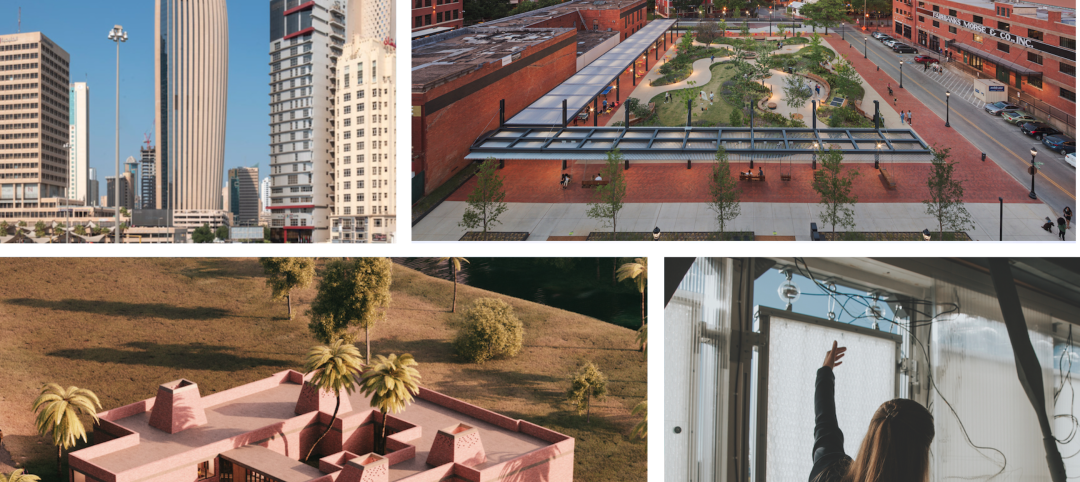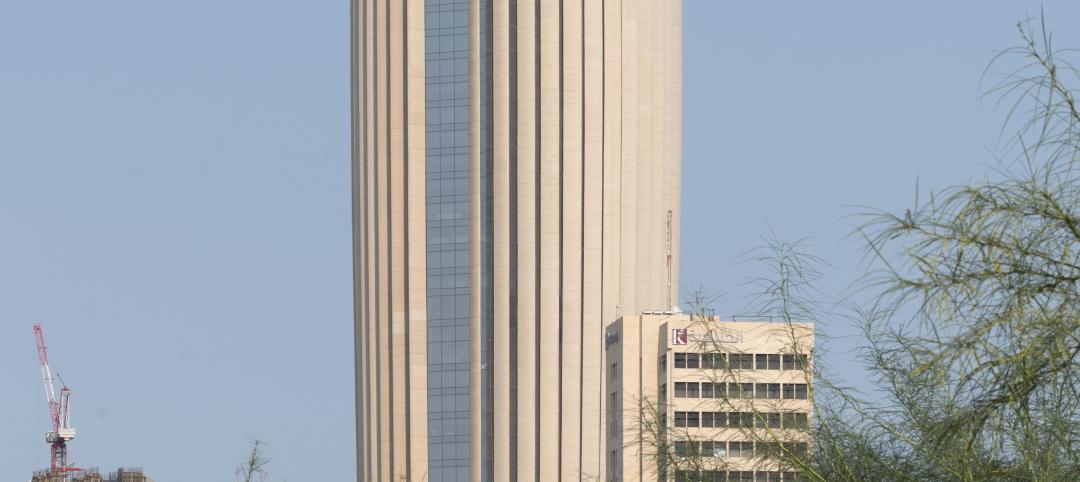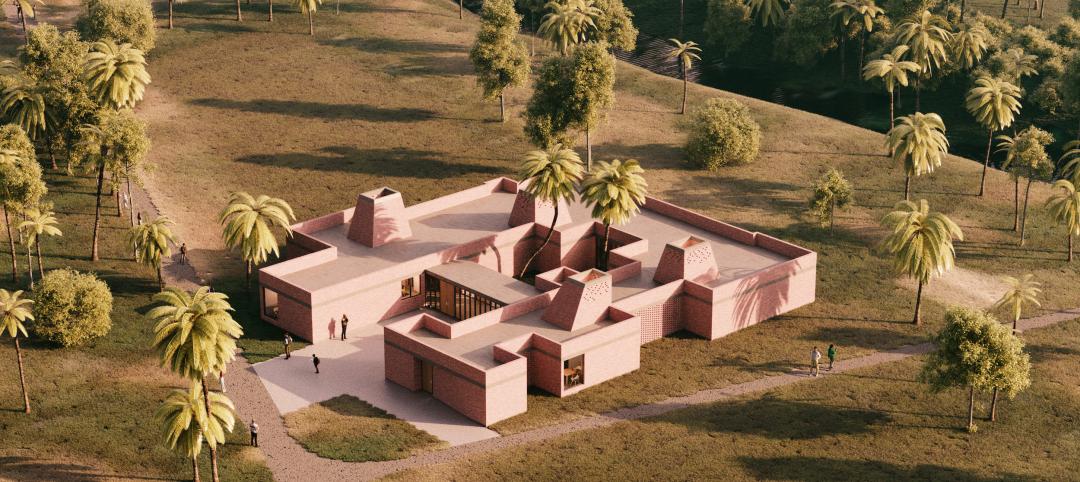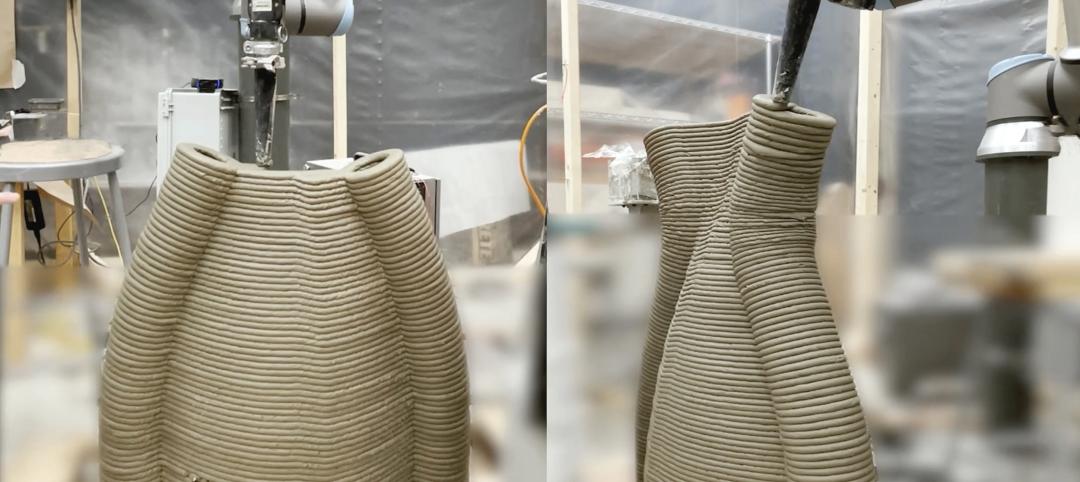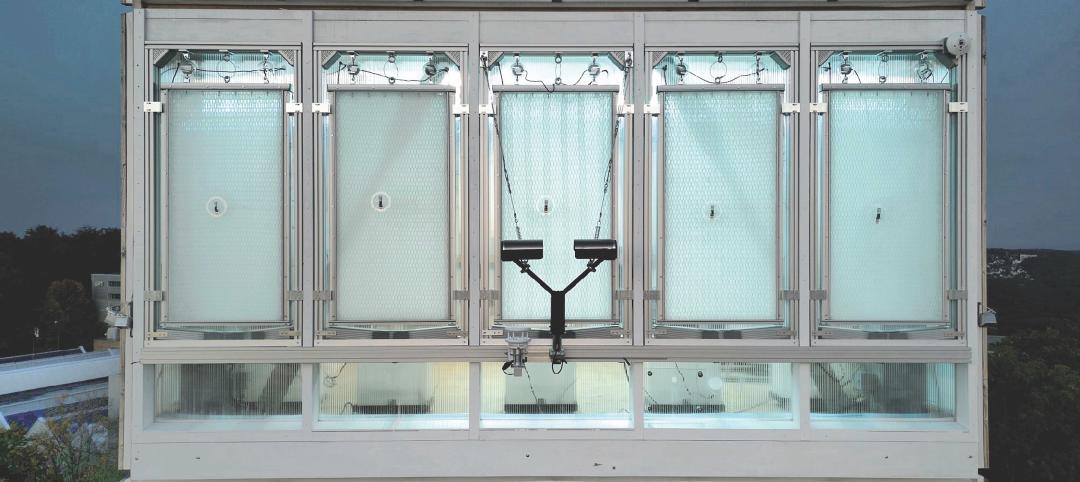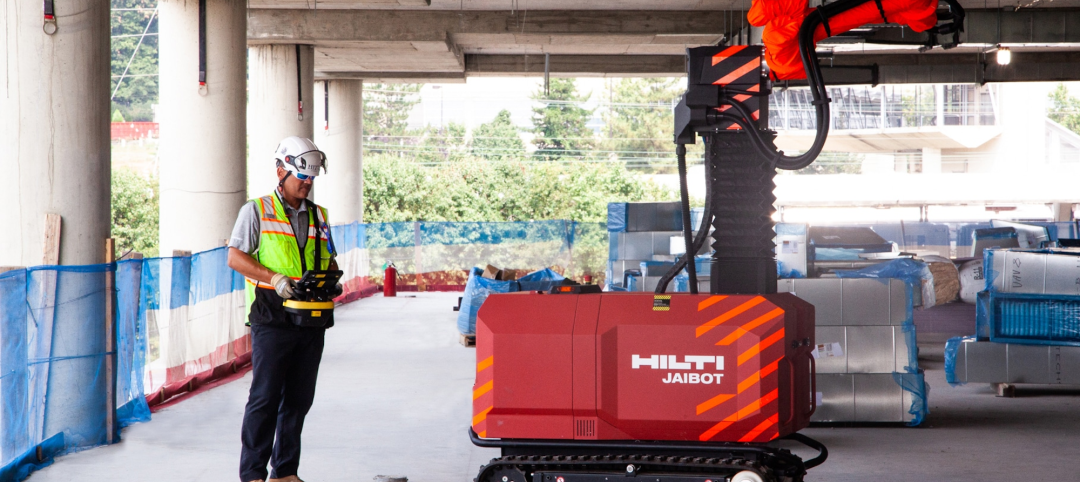The thought of colonizing Mars has science fiction aficionados, scientists, and billionaire entrepreneurs staring up at the night sky with renewed wonder and inspiration. But the key to achieving the lofty goal of colonizing and building extensively on a new planet may not exist out among the stars, but under our feet right here on Earth.
Christopher Maurer, an architect and Founder of Cleveland-based Redhouse Studio, and Lynn Rothschild, a NASA Ames researcher, believe algae and mycelium (the vegetative part of a fungus that consists of a network of fine white filaments) may make the perfect building material on Mars.
See Also: Rovers set to invade construction jobsites
The algae, which would act as the food supply for the fungus, and mycelium spores would be packed into a flexible plastic shell where it would be watered and coaxed to grow, providing structure for the shell and filling it out almost like air fills out a bouncy castle.
 Courtesy Redhouse Studio.
Courtesy Redhouse Studio.
Here is how Rothschild, the principal investigator on the project, and Maurer, the co-investigator, envision the process working on Mars:
• Hermetically sealed bags containing dehydrated algae and dormant mycelium would be delivered to Mars (at a fraction of the weight, space, and cost of traditional building materials) and deposited at a given build site. The bags would then be unfolded and laid flat.
• A rover would deliver carbon dioxide, nitrogen, and water sourced from Mars to begin the growing process. The double-sealed plastic shell will fill with air and water, and the embedded algae will begin to grow. This reaction will create oxygen and biomass to fill the shell and give it form.
• Fungi are released and bind with the dried algal biomass to create a strong composite. This packed mycelium has a compression strength that is better than that of lumber and a better bend strength than reinforced concrete. The entire process would only take a couple of
days to complete.
 Courtesy Redhouse Studio.
Courtesy Redhouse Studio.
Essentially, astronauts would have a sustainable building material that can be altered to produce anything from more fabric-like materials to the ultra-compacted, rigid material required for structural uses. There is also the possibility that it can be bioengineered with pigments to protect against one of the toughest obstacles associated with building on Mars: radiation. The shells could be made in any shape to produce dwellings reminiscent of the ones we are more acclimated with here on Earth.
This project, which is being funded by the NASA Innovative Advanced Concepts program, is nowhere near becoming a reality, but it is one of the most well-rounded ideas yet for building on another planet.
Related Stories
Design Innovation Report | Apr 27, 2023
BD+C's 2023 Design Innovation Report
Building Design+Construction’s Design Innovation Report presents projects, spaces, and initiatives—and the AEC professionals behind them—that push the boundaries of building design. This year, we feature four novel projects and one building science innovation.
Design Innovation Report | Apr 19, 2023
Reinforced concrete walls and fins stiffen and shade the National Bank of Kuwait skyscraper
When the National Bank of Kuwait first conceived its new headquarters more than a decade ago, it wanted to make a statement about passive design with a soaring tower that could withstand the extreme heat of Kuwait City, the country’s desert capital.
Design Innovation Report | Apr 19, 2023
HDR uses artificial intelligence tools to help design a vital health clinic in India
Architects from HDR worked pro bono with iKure, a technology-centric healthcare provider, to build a healthcare clinic in rural India.
3D Printing | Apr 11, 2023
University of Michigan’s DART Laboratory unveils Shell Wall—a concrete wall that’s lightweight and freeform 3D printed
The University of Michigan’s DART Laboratory has unveiled a new product called Shell Wall—which the organization describes as the first lightweight, freeform 3D printed and structurally reinforced concrete wall. The innovative product leverages DART Laboratory’s research and development on the use of 3D-printing technology to build structures that require less concrete.
Cladding and Facade Systems | Apr 5, 2023
Façade innovation: University of Stuttgart tests a ‘saturated building skin’ for lessening heat islands
HydroSKIN is a façade made with textiles that stores rainwater and uses it later to cool hot building exteriors. The façade innovation consists of an external, multilayered 3D textile that acts as a water collector and evaporator.
Transportation & Parking Facilities | Mar 23, 2023
Amsterdam debuts underwater bicycle parking facility that can accommodate over 4,000 bikes
In February, Amsterdam saw the opening of a new underwater bicycle parking facility. Located in the heart of the city—next to Amsterdam Central Station and under the river IJ (Amsterdam’s waterfront)—the facility, dubbed IJboulevard, has parking spots for over 4,000 bicycles, freeing up space on the street.
Concrete | Jan 24, 2023
Researchers investigate ancient Roman concrete to make durable, lower carbon mortar
Researchers have turned to an ancient Roman concrete recipe to develop more durable concrete that lasts for centuries and can potentially reduce the carbon impact of the built environment.
Sponsored | Resiliency | Dec 14, 2022
Flood protection: What building owners need to know to protect their properties
This course from Walter P Moore examines numerous flood protection approaches and building owner needs before delving into the flood protection process. Determining the flood resilience of a property can provide a good understanding of risk associated costs.
Giants 400 | Nov 14, 2022
4 emerging trends from BD+C's 2022 Giants 400 Report
Regenerative design, cognitive health, and jobsite robotics highlight the top trends from the 519 design and construction firms that participated in BD+C's 2022 Giants 400 Report.
AEC Tech | Apr 13, 2022
A robot automates elevator installation
Schindler—which manufactures and installs elevators, escalators, and moving walkways—has created a robot called R.I.S.E. (robotic installation system for elevators) to help install lifts in high-rise buildings.



